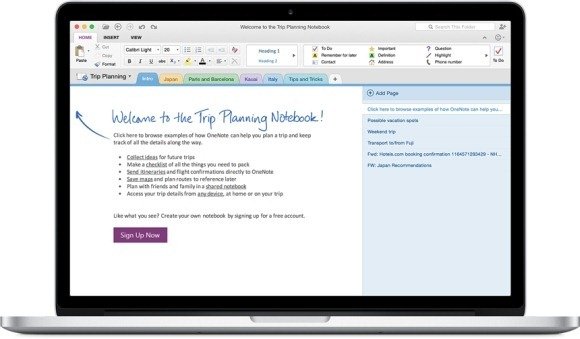Quick tip: You can save the template on any location, but it's best to store the file in the 'Custom Office Templates' folder, so Word can display the file in the 'Personal' tab when using the. A short note so that I can remember, and you can find, the template location for Office 2016 on the Mac. Why do I do this? It may appear, and certainly Google will agree, that your template location is: /Library/Application Support/Microsoft/Office/User Templates/My Templates. BTW, you get Library by holding do the Option key and select Go. Without the Option key being pressed you will not see it. Templates; More support. 2013 PowerPoint 2013 Publisher 2013 Excel 2010 Word 2010 Outlook 2010 PowerPoint 2010 Publisher 2010 Publisher 2007 Excel 2016 for Mac Outlook 2016 for Mac PowerPoint 2016 for Mac Word 2016 for Mac Word for Mac 2011 Excel for Mac 2011 Outlook for Mac 2011 PowerPoint. To change the display language for Office for. Yes, you can install and use Office 2016 for Mac and Office for Mac 2011 at the same time. However, we recommend that you uninstall Office for Mac 2011 before you install the new version just to prevent any confusion. To uninstall Office for Mac 2011, follow the steps in Uninstall Office 2011 for Mac. How do I pin the Office app icons to the dock?
You can download the Office 2016 (or 2013 if thats what you're using) admin template files here: https://www.microsoft.com/en-us/download/details.aspx?id=49030
Import them into GPO and then create a policy and change the 'Workgroup Templates Path' to your shared drive location under User ConfigurationPoliciesAdministrative TemplatesMicrosoft Office 2016Shared Paths
After that, if you want the default tab for creating a new file to be the 'Shared' tab that Office creates when using shared templates then create registry key:
HKEY_CURRENT_USERSoftwareMicrosoftoffice16.0wordoptions
DWORD: officestartdefaulttab
Value: 1
This one is for word, but is similar for each of the programs.
Although an occasional sacrifice to the Office gods may make your networking life a bit easier, a template isn’t a place of worship. Rather, a template is a special type of document file that holds formatting information, boilerplate text, and other customized settings that you can use as the basis for new documents.
Three Office programs — Word, Excel, and PowerPoint — enable you to specify a template whenever you create a new document. When you create a new document in Word, Excel, or PowerPoint by choosing File → New, you see a dialog box that lets you choose a template for the new document.
Office comes with a set of templates for the most common types of documents. These templates are grouped under the various tabs that appear across the top of the New dialog box.
In addition to the templates that come with Office, you can create your own templates in Word, Excel, and PowerPoint. Creating your own templates is especially useful if you want to establish a consistent look for documents prepared by your network users. For example, you can create a Letter template that includes your company’s letterhead or a Proposal template that includes a company logo.
Office enables you to store templates in two locations. Where you put them depends on what you want to do with them:
- The User Templates folder on each user’s local disk drive: If a particular user needs a specialized template, put it here.
- The Workgroup Templates folder on a shared network drive: If you have templates that you want to make available to all network users on the network server, put them here. This arrangement still allows each user to create templates that aren’t available to other network users.
When you use both a User Templates folder and a Workgroup Templates folder, Office combines the templates from both folders and lists them in alphabetical order in the New dialog box. For example, the User Templates folder may contain templates named Blank Document and web Page, and the Workgroup Templates folder may contain a template named Company Letterhead. In this case, three templates appear in the New dialog box, in this order: Blank Document, Company Letterhead, and web Page.
To set the location of the User Templates and Workgroup Templates folders, follow these steps in Microsoft Word:
- Click the Office button and then click Word Options. The Word Options dialog box opens.
- Click the Advanced tab. The Advanced options appear.
- Scroll down to the General section and then click the File Locations button. The File Locations dialog box appears.
- Double-click the Workgroup Templates item. This step opens a dialog box that lets you browse to the location of your template files.
- Browse to the template files and then click OK. You return to the File Locations dialog box.
- lick OK to dismiss the File Locations dialog box. You return to the Word Options dialog box.
- Click OK again. The Word Options dialog box is dismissed.

Although the User Templates and Workgroup Templates settings affect Word, Excel, and PowerPoint, you can change these settings only from Word. The Options dialog boxes in Excel and PowerPoint don’t show the User Templates or Workgroup Templates options.
Office 2016 Mac Template Locations

Office 2016 Mac Key
When you install Office, the standard templates that come with Office are copied into a folder on the computer’s local disk drive, and the User Templates option is set to this folder. The Workgroup Templates option is left blank. You can set the Workgroup Templates folder to a shared network folder by clicking Network Templates, clicking the Modify button, and specifying a shared network folder that contains your workgroup templates.